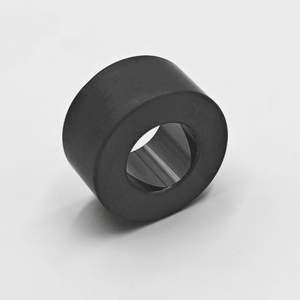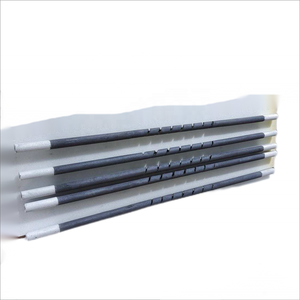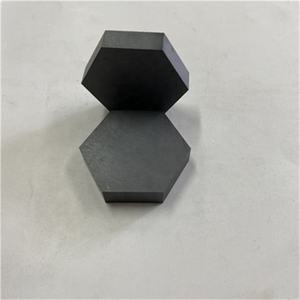Professional industry ceramic supplier, silicon nitride, silicon carbide, aluminum nitride and any other kinds of ceramics.
PRODUCT PARAMETERS
Description
Overview of Reaction Boned Silicon Carbide SiSiC / RBSIC Ceramics Cantilever Paddle
Reaction Boned Silicon Carbide SiSiC / RBSIC Ceramics Cantilever Paddle ceramics are a class of ultra-high-performance materials known for their exceptional thermal conductivity, outstanding mechanical properties, and superior chemical stability. They excel in the most demanding environments involving extreme temperatures, wear, and corrosive agents. This combination of properties makes SiC ceramics indispensable for advanced applications in aerospace, energy, automotive, and industrial processing.
Features of Reaction Boned Silicon Carbide SiSiC / RBSIC Ceramics Cantilever Paddle
-
Exceptional Thermal Conductivity: Facilitates excellent heat dissipation, outperforming many metals and most other ceramics.
-
High-Temperature Strength: Maintains remarkable mechanical strength and creep resistance at temperatures up to 1650°C.
-
Superior Wear & Abrasion Resistance: Offers extreme hardness, making it ideal for wear-prone components like seals, nozzles, and liners.
-
Excellent Chemical Inertness: Highly resistant to oxidation and attack by acids, alkalis, and molten metals.
-
High Thermal Shock Resistance: Withstands rapid temperature changes without cracking or degrading.
-
Semiconductor Properties: Used extensively in high-power, high-frequency electronic devices.
Specification of Reaction Boned Silicon Carbide SiSiC / RBSIC Ceramics Cantilever Paddle
Reaction Bonded Silicon Carbide ceramics cantilever paddles offer exceptional performance in tough industrial settings. SiSiC/RBSIC material provides unique advantages. This material is very hard. It resists wear extremely well. This means the paddles last much longer than metal alternatives. Downtime for replacements decreases significantly.
These paddles handle very high temperatures easily. They work reliably in environments exceeding 1400°C. Thermal shock resistance is another key benefit. Rapid temperature changes do not cause cracking. This stability is crucial for processes involving heat cycling.
Chemical resistance is excellent. SiSiC/RBSIC withstands attack from acids, alkalis, and molten salts. Corrosion is not a problem. This makes the paddles suitable for harsh chemical processes. Material integrity remains intact.
The cantilever paddle design is simple but effective. It allows for easy installation and operation within systems. The one-sided support structure works well for pushing or mixing materials. The paddle shape is optimized for efficient material movement. Minimal friction occurs during use.
Strength and stiffness are high despite the ceramic nature. Reaction bonding creates a dense, strong structure. The paddles resist bending and breaking under load. Impact resistance is good for a ceramic. This durability ensures reliable operation.
These paddles find use in many demanding applications. Furnace pusher systems rely on them. Kiln furniture movement uses them extensively. They handle hot, abrasive materials directly. High-temperature conveying systems benefit from their properties. Any process needing strong, wear-proof parts at high heat can use them.
SiSiC/RBSIC cantilever paddles provide a long-lasting solution. They reduce maintenance costs. They improve process reliability. They handle conditions unsuitable for metals or polymers.
Applications of Reaction Boned Silicon Carbide SiSiC / RBSIC Ceramics Cantilever Paddle
Reaction Bonded Silicon Carbide ceramics cantilever paddles offer tough solutions for demanding industrial settings. This material, often called RBSIC or SiSiC, is incredibly hard. It handles extreme heat well. RBSIC resists corrosion from harsh chemicals. It also stands up to constant wear and friction. These properties make it perfect for cantilever paddle designs.
Cantilever paddles move materials. They often work inside pipes or chutes. They face abrasive powders, corrosive liquids, and high temperatures. Metal paddles wear down quickly here. They bend or corrode. Plastic paddles melt or crack. RBSIC ceramics last much longer. They keep their shape under stress. This means less downtime for replacements. Factories save money over time.
Chemical processing plants use these paddles extensively. They control aggressive acids and bases. They handle abrasive slurries without failing. Power generation facilities rely on them too. RBSIC paddles manage fly ash in boilers. They handle high-temperature gases reliably. Metallurgical operations benefit greatly. These paddles direct molten metal dust and hot slag. They resist the intense heat and wear.
Water treatment plants install RBSIC cantilever paddles. They mix chemicals and move sludge effectively. Mining operations deploy them for moving ores. The paddles endure the abrasive nature of raw minerals. Food production uses them for dry ingredients. The non-stick nature of RBSIC helps. It prevents material buildup. It ensures clean operation. Its inertness meets food safety standards easily.
RBSIC ceramics cantilever paddles are workhorses. They perform reliably where other materials fail. Their strength, heat tolerance, and chemical resistance deliver consistent operation. They reduce maintenance costs significantly. They extend equipment life in tough environments. Factories across many industries choose them for dependable material handling.
Company Profile
Tanki New Materials Co.Ltd. focus on the research and development, production and sales of ceramic products, serving the electronics, ceramics, chemical and other industries. Since its establishment in 2015, the company has been committed to providing customers with the best products and services, and has become a leader in the industry through continuous technological innovation and strict quality management.
Our products includes but not limited to Aerogel, Aluminum Nitride, Aluminum Oxide, Boron Carbide, Boron Nitride, Ceramic Crucible, Ceramic Fiber, Quartz Product, Refractory Material, Silicon Carbide, Silicon Nitride, ect. please feel free to contact us.

Payment Methods
T/T, Western Union, Paypal, Credit Card etc.
Shipment Methods
By air, by sea, by express, as customers request.
5 FAQs of Reaction Boned Silicon Carbide SiSiC / RBSIC Ceramics Cantilever Paddle
What makes RBSIC ceramics special for cantilever paddles?
RBSIC ceramics mix silicon carbide with silicon metal. This gives them great strength and stiffness. They handle very high temperatures well. They resist wear and thermal shock superbly. These traits are perfect for tough jobs like moving heavy kiln furniture.
Why pick RBSIC over other ceramics?
RBSIC beats many ceramics on toughness. It handles sudden temperature changes better. It also resists breaking under heavy loads. This toughness means RBSIC paddles last much longer in rough conditions. You get less downtime for replacements.
How hot can RBSIC cantilever paddles get?
RBSIC paddles work reliably up to 1380°C (2516°F). They keep their strength and shape at these temperatures. This makes them ideal for high-heat processes like sintering ceramics or firing metal parts.
Do RBSIC paddles resist chemicals?
Yes, they resist chemicals very well. Acids and bases don’t easily damage them. This is important in harsh industrial settings. Chemical exposure won’t quickly ruin the paddle. It keeps working reliably.
Where are RBSIC cantilever paddles mostly used?
You find them in kilns and furnaces pushing heavy loads. They work in powder processing moving abrasive materials. They handle metal heat treatment pushing trays. Anywhere needing strong, heat-proof, wear-resistant parts benefits from them.
REQUEST A QUOTE
RELATED PRODUCTS

Silicon Carbide Sic Ceramic Heater for Wood Pellet Burner Ignition 767A-361

High Grade G5 G10 G16 G20 G25 Sic Silicon Carbide Ceramic Ball 6.000mm for Bearing

Ceramic Insulation Beads Silicon Carbide Mechanical Beads

Silicon Carbide Ceramic Foam Filter with a Maximum Temperature 1500 Degrees for Filtration of Copper Alloys

Factory Direct Ss 2.381mm 3.175mm 4.763mm 6.35mm 7.144mm G3-G100 Sic Silicon Carbide Ceramic Ball for Bearing



